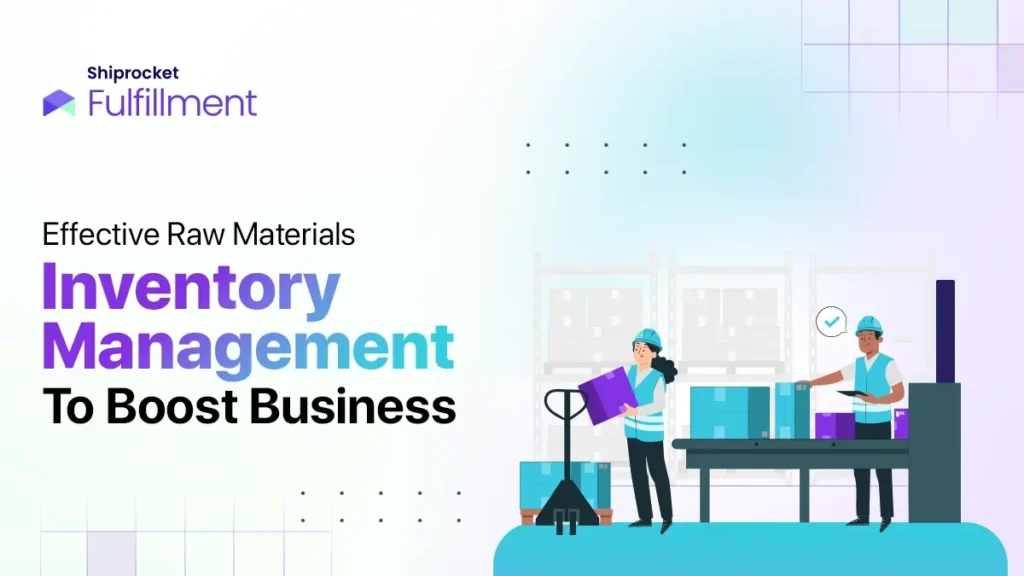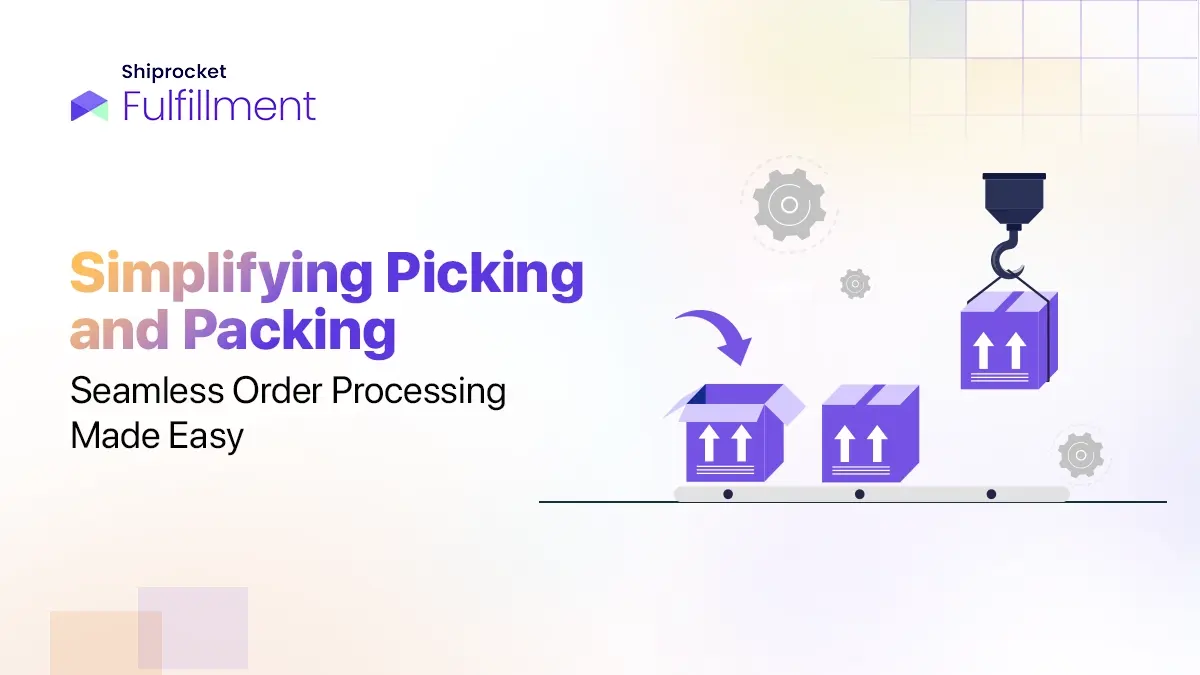Raw materials form the basis of production processes across industries. Effective management of the raw materials inventory is thus vital for ensuring smooth manufacturing and maintaining supply chain efficacy. Be it small manufacturing units or large factories producing tons of products, managing raw materials inventory efficiently is important for everyone. If you are struggling with it then this guide will help you understand raw materials inventory, the importance of managing it efficiently, approaches to managing it, and more.

Understanding Raw Materials Inventory
Raw material inventory includes all the materials that a company uses to manufacture its end product. These are stored in their raw form. During the production process, they are cut, moulded, and even merged with other raw materials to create the finished product. Raw materials used in each industry vary depending upon the kind of goods it manufactures. For instance, a leather bag-making business uses raw materials like different types of leather, buckles, zippers, and leather dyes among others. Likewise, raw materials for a furniture company include wood, leather, springs, fabric, screws, paints, glue, laminate sheets, foam, cardboard, and more. Although the raw materials may vary vastly, it is important to manage them efficiently irrespective of the industry.
The Significance of Proficient Raw Materials Inventory Management
It is important to achieve efficiency in raw materials inventory management owing to the reasons mentioned below:
Ensure Smooth Production Process
Mastery of raw materials inventory management is crucial as these materials form the basis of production. Disruption in their supply can lead to interruptions in the manufacturing processes. This delays production and results in costly downtime.
Cost Minimisation
Inventory management is necessary for reducing the cost associated with storing excess raw materials. On the other hand, a shortage of raw materials can result in increased prices because of high demand and low supply.
Fulfilling Customer Demand
It is critical to maintain an adequate stock of raw materials to fulfill customer demand quickly. Shortage of them leads to delays in producing the end product. This, in turn, leads to dissatisfaction among customers.
Decreasing Lead Times
A well-managed raw materials inventory enables quick response to customer orders. This helps decrease the lead time and enhances the overall customer experience.
Strengthens Supply Chain
A well-maintained raw materials inventory gives the chance for better negotiation with the suppliers. It empowers you to make an informed decision when it comes to bulk purchases and providing discounts.
Managing Raw Materials Inventory in Your Accounting
It is important to manage raw materials inventory in your accounting. The process involves keeping track of the quantity of the raw materials. It also includes monitoring the value of the raw materials and their movement within the organisation.
Determining the Value of Your Raw Materials Inventory
Here is a look at all that you must take into account to determine the value of the raw materials inventory:
Raw Material Inventory Available Initially
This helps calculate the total value of the raw materials in your inventory at the beginning of the accounting period.
Raw Materials Bought
The raw materials bought during the given accounting period must be taken into account to reach the correct value.
Cost of Goods Sold
All the expenditures associated with the manufacturing of finished goods using the available raw materials inventory should also be taken into account. This includes labour costs, transportation charges, lease payments, utility bills, insurance, taxes, depreciation costs, office supplies, maintenance charges, etc.
Here is the formula to calculate the value of your raw materials inventory:
Available raw materials inventory = (Raw materials inventory available initially + total raw materials purchased during the accounting period) – (Cost of goods sold)
Optimal Approaches for Raw Materials Inventory Management
Here are some of the optimal approaches you can take to manage your raw materials inventory efficiently:
Forecast Consumer Demand
A demand forecast is necessary to manage your raw material inventory effectively. You can do so by collating and analysing your available data as well as the latest market trends. This helps in the timely restocking of raw materials to avoid running out of stock.
Ensure Stock Safety
The supply chain cycle may face disruptions owing to many unavoidable reasons. This can lead to delays in production but not when you have adequate essential raw materials stored safely in your warehouse.
Invest in Just-in-Time Inventory
You must make sure that a Just-in-Time inventory system is in place. This is necessary to lower the carrying expense and respond effectively to demand fluctuations. This ensures that you get the raw materials when needed without spending a huge amount on storage space.
Maintain a Cordial Relationship with Suppliers
It is important to maintain cordial relationships with suppliers to ensure a smooth flow of raw materials supply. Effective communication is necessary for this.
Leverage Advanced Inventory Control Systems
Advanced inventory control systems help in efficiently monitoring the raw materials inventory levels and controlling them. They give a clear picture of the real-time availability of raw materials. So, you can make better decisions about new purchases as well as production.
Conduct Regular Audits
It is important to carry out audits regularly to know the updated status of the raw materials inventory. It helps in identifying discrepancies. By having a clear understanding of the loopholes, you can take action to rectify them.
Employ Suitable Inventory Valuation Methodology
Inventory valuation methodology involves assigning a monetary value to your raw materials stock. It is essential to select an inventory valuation method that aligns with your business needs and your accounting protocols. FIFO (First In, First Out) and LIFO (Last In, First Out) are famous methods. In FIFO, the oldest inventory is sold first, and in LIFO the newest one is sold first. The choice of method influences the financial statements and tax liabilities. It impacts how costs are matched with revenue. It is a crucial aspect of financial management. It reflects an accurate representation of a company’s assets and income.
Considerations for Sustainability
It is important to use sustainable options to source raw materials. Sustainable sourcing refers to materials that have a lesser impact on the environment. This strengthens the goodwill of your company especially among environmentally conscious consumers.
Conclusion
Effective raw materials inventory management is necessary to thrive in this competitive world. It enables a smooth manufacturing process, better cost management, and enhanced customer satisfaction. It is suggested to use advanced inventory control systems, maintain cordial supplier collaboration, and ensure stock safety to ensure the same.
Several methods are there to keep track of the raw materials inventory in an industry. A popular technique is the use of inventory management software and barcode systems. This method is increasingly being used by large organisations to keep manage their inventory efficiently. You can also track and record your inventory by using the manual counting system. However, this works only when the raw material inventory is limited.
To manage raw materials inventory efficiently, it is imperative to forecast customer demand, ensure stock safety, and leverage inventory control systems. Conducting regular audits and making use of correct costing methods is also necessary for efficient management.
Raw materials inventory turnover refers to the rate at which raw inventory is used up and subsequently replenished.





